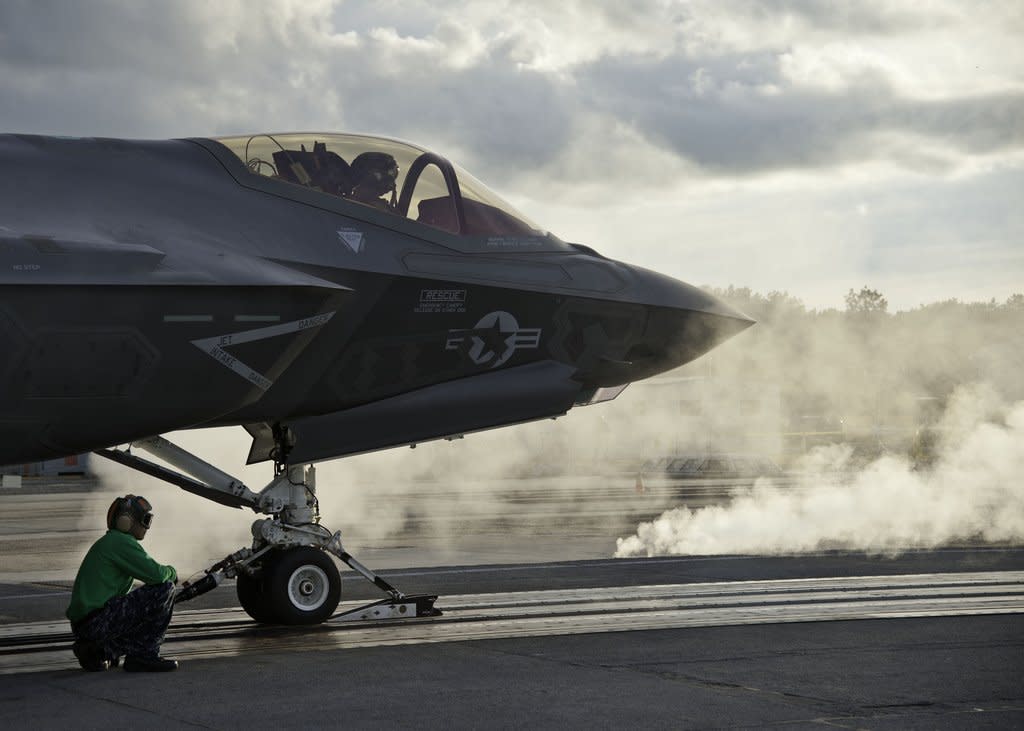How the US Navy plans to fix the F-35's most troubling problem

US Navy Photo
In January, a report from Inside Defense broke the news that the US Navy's F-35 variant, the most expensive in the Joint Strike Fighter family, had an issue with the nose gear that made takeoffs untenably rough and the aircraft unsuited for carrier launches.
The Navy's F-35C has a history of problems with its development as it attempts to master the tricky art of catapult launches from aircraft carriers, but the nose-gear issue could set back the F-35C into the 2020s if an innovative solution is not found quickly.
Business Insider has uncovered footage that appears to show the problem:
Tweet Embed:
https://twitter.com/mims/statuses/824949931907620864
AC/DC in an Angus Young style, or F-35C's 'delay gear'? Notice $400k helmet jumping out. @alexjlockie to @BI_Defense https://t.co/d7lFM0I6As pic.twitter.com/0xlUnkEWHp
Essentially, the takeoff in the F-35C is too rough, jostling the pilots so they can't read flight-critical data on their $400,000 helmet-mounted displays.
"This is a very stiff airplane, even though the oscillations about the same magnitude as you would see in a Super Hornet. It beats the pilot up pretty good," US Air Force Lt. Gen. Chris Bogdan told reporters at the McAleese/Credit Suisse defense conference earlier this month, US Naval Institute News reported.
F-35C pilots are "hurting after doing three or four of these [launches] and in some instances even banging his half-a-million-dollar helmet on the canopy," Bogdan said. "That's not good for the canopy or the helmet. So we knew we had an issue there."
Testing at a land-based US Navy catapult system showed that instead of a costly and lengthy redesign of the F-35C's nose section, some smaller adjustments may suffice.
Jeff Babione, the general manager of Lockheed Martin's F-35 program, echoed that sentiment at the company's office in the Washington, DC, area, telling reporters the company had worked on a few simple changes that seemed to yield results. Babione said Lockheed Martin changed the way the pilot straps in and their head and arm positions, as well as reduced the "holdback," or stress on the plane, in the moments before launch.
"The initial indication is some of those techniques improved" the F-35C's launches, Babione said. He conceded that the real testing would be done by the Navy aboard carriers "to see whether or not those changes were successful."
The make-or-break tests of the launch will take place at sea later this year.
NOW WATCH: A Navy SEAL explains what to do if someone tries to mug you
See Also:

 Yahoo News
Yahoo News 

